Acrylic paint pouring is fairly new in the creative craft world. It’s been on my “must try” list since I first started seeing posts and videos giving demonstrations. I love the beauty and unpredictability of the outcome. So much depends on the paint used, the pouring medium, and how it’s put onto the painting surface that you would never be able to make a duplicate. It’s also something beginners can do with amazing results.
I picked up a pouring kit on clearance at our local craft store after Christmas. Last weekend two of my grandkids were here for the day and wanted to try something new. So out came the kit and we had some fun. Many videos are online now to show you the various methods of doing paint pours, so I am not going to show you how— I’ll just tell you what we did. (I was too busy helping them to take pictures of each step!)
After watching a couple of videos, the kids decided to do a dirty pour. That method is to put several colors of paint into a cup, lay the canvas upside down on top of the cup and then turn everything over at once. Then the cup is sitting upside down, full of paint, on top of the canvas. When you pick up the cup, the paint pools on the canvas.
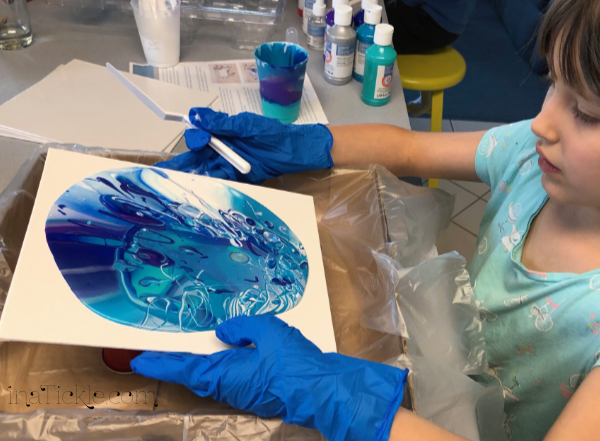
B not only tilted her painting in each direction to let the paint spread over the canvas, she also used a light plastic spatula to do some design work. J wanted to only use tilting for his design.

Many demos talk about using a blow torch lightly over the paint to help activate the cells (created by the silicone additive). We don’t have a blow torch, so I used my craft heat gun. It seemed to work fine. Once they were satisfied with the way their paint pour looked, the paintings sat untouched for several days to dry completely. It’s a messy project, so I suggest using gloves, small flat cardboard box and plastic to catch the paint falling off the edge, and cups or something to hold the canvas up off the surface while it dries.
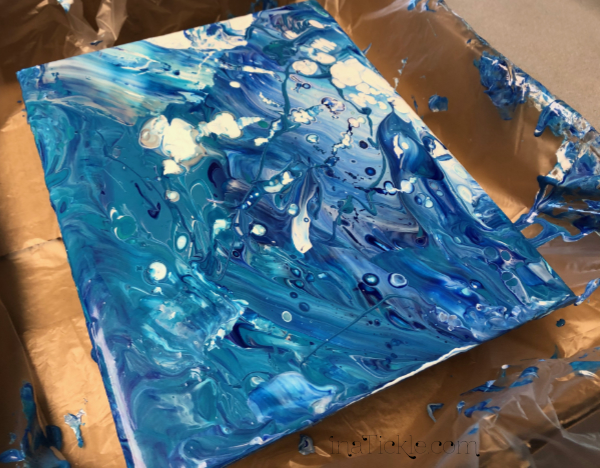
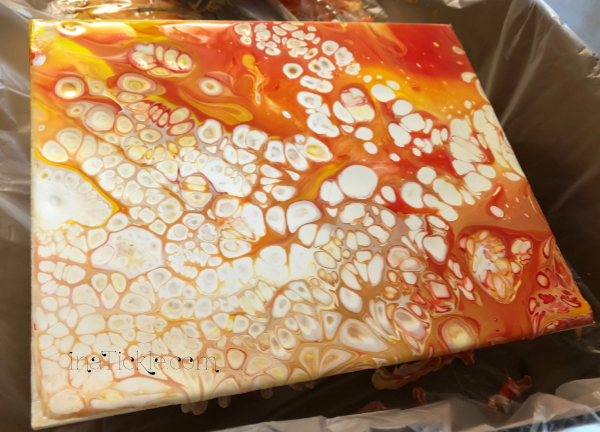
Since there was an over abundance of orange paints mixed, I scooped up puddles of paint from the plastic lining the cardboard and poured it onto a small pre-painted canvas just to see what it would do.
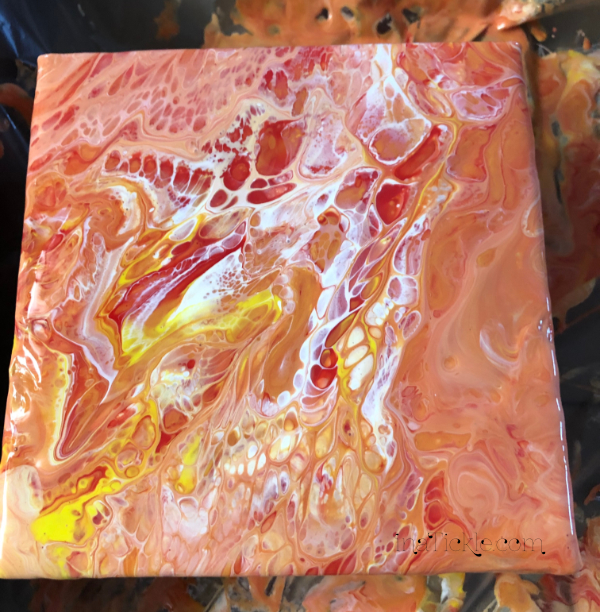
It must have been coated with something, because the paint separated as it dried, leaving interesting cracks. Either the silicone or the pouring medium must have caused the underpainting to blur but still keep its color. It made for an interesting experiment!
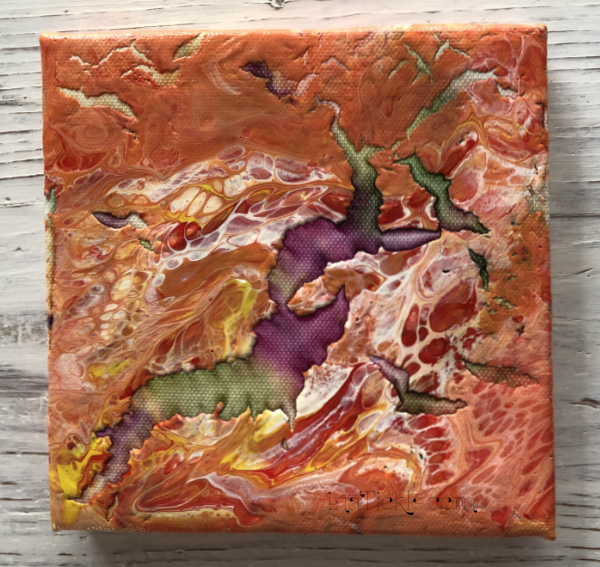
All dry!

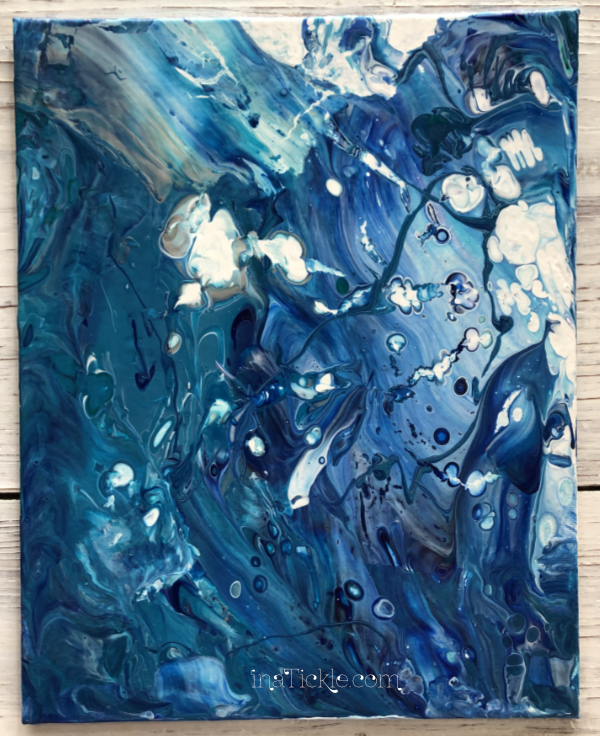
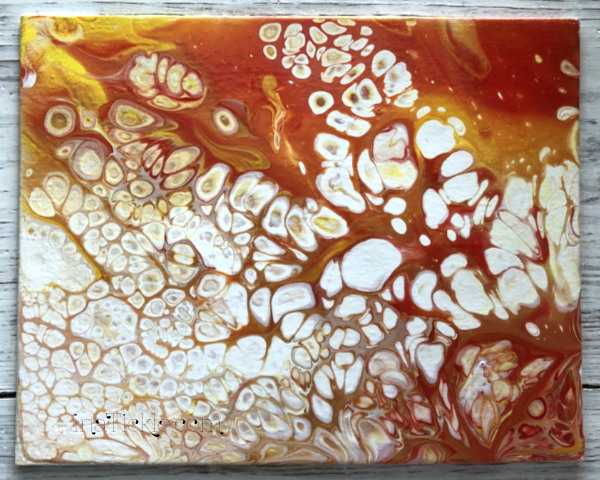
I definitely want to try more paint pouring and I’m sure the rest of the grandkids want their turn as well! Have you done paint pouring?
